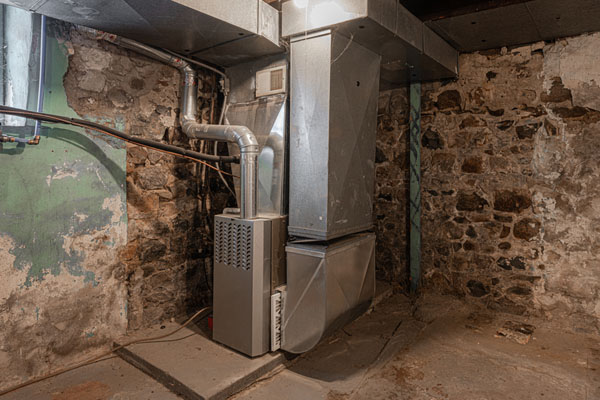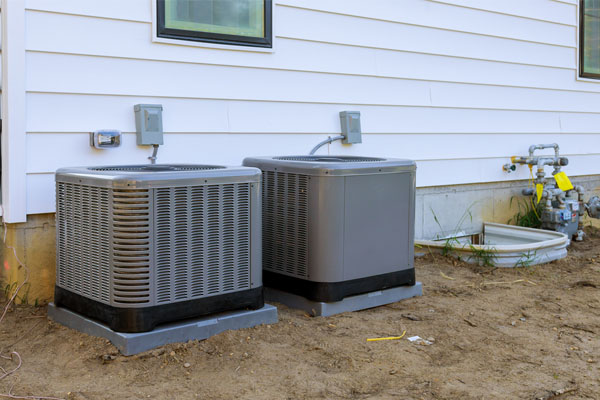Table of Contents
Selecting or upgrading your HVAC system is a critical decision. Identifying the nuances between different systems, such as central vs forced air systems, is essential in making an informed choice. This article can guide you through the intricacies of these two HVAC system types. We aim to illuminate the advantages of each, providing clarity to ensure you choose the system that aligns perfectly with your home’s needs.
HVAC systems often come with complex technical terms that can be overwhelming. County Line Fuel, equipped with deep knowledge and extensive experience in HVAC installations across our service area, is dedicated to providing comprehensive information for your new HVAC system. With our team, you can be confident that you’re making the best decision for your comfort and needs.
How Does a Forced-Air HVAC System Work?
HVAC professionals frequently use the term “forced air” to describe air heating systems, but the concept extends beyond this simple definition. Essentially, a forced-air system encompasses any HVAC setup that propels temperature-controlled air into a residence through vents and ductwork.
When HVAC technicians refer to “forced air” exclusively in the context of heating, they are likely thinking of a furnace or a heat pump.
Take the first step towards year-round comfort and peace of mind – contact County Line Fuel for all your HVAC requirements today!
How Does a Furnace Work?

The operation of furnaces, whether they are powered by gas, oil, electricity, or propane, follows a similar process:
- The furnace generates heat using propane, oil, natural gas, or electricity.
- This generated heat is then transferred through a heat exchanger.
- Air circulating in the house’s ductwork passes over the heat exchanger, where it gets warmed up.
- The blower in the furnace propels this warmed air through the ductwork, effectively heating the entire house.
Furnaces are often termed forced-air furnaces because of this process of pushing heated air into and throughout the rooms of a house via a blower.
How Does a Heat Pump Work?

A heat pump functions similarly to an air conditioner, with the added capability of heating and cooling a home. In the warmer months, it extracts heat from inside the house and discharges it outside. Conversely, during the colder seasons, it captures heat from the outdoor air and directs it inside the home.
Heat pumps operate through a distinct process to produce warmth in a residence:
- Heat pumps draw heat from external sources like the ground, air, or water through the evaporator, which transfers it to a heat exchanger inside the house.
- The refrigerant evaporates when it encounters heat. This evaporated refrigerant then flows to the compressor, where its compression significantly increases the heat.
- After transforming into a gas, the refrigerant moves to the condenser to revert to liquid form. The condenser serves as a secondary heat exchanger, facilitating heat transfer to the water in the central heating system.
- The system then effectively disperses this warmth throughout the house.
- Specific heat pumps employ heated water to achieve this, circulating it through underfloor pipes or into radiators for even heat distribution. Other heat pumps utilize motorized blowers to propel hot air into the ductwork.
Experience hassle-free home comfort solutions with County Line Fuel – reach out to our team of experts today!
What Is Central Air Conditioning & How Does It Work?
Central air conditioning operates on a closed-loop system utilizing refrigerated air to maintain a cool and comfortable environment in a house. A central AC system typically comprises interconnected outdoor and indoor units. The cooling process in central air works through these steps:
- Step 1: A vent draws warm air from the home, directing it over the evaporator coils. These coils absorb the heat, cooling the air, which is sent back through the ductwork.
- Step 2: When the refrigerant inside the coils absorbs this heat, it transforms from a liquid to a gas and proceeds to the compressor. The compressor then reduces the gas’s volume, increasing its temperature and pressure.
- Step 3: The gas travels to the condenser in the outdoor unit. Here, it releases the heat into the outside environment, which results in the gas cooling down and reverting to a liquid state.
- Step 4: This cooled refrigerant is circulated back through the system, ready to repeat the cooling cycle.
Distinguishing Between Forced Air & Central Air HVAC Systems
Understanding the difference between central air and forced-air systems is key in choosing the right one for your home. Central air systems are exclusively designed for cooling, utilizing vents, ducts, and a plenum (a component that facilitates air movement) within a forced-air framework to deliver cool, regulated air.
Interestingly, a central air conditioning system often shares the same ductwork as your furnace to distribute cool air throughout your home yet operates independently without any other direct connection to the heating system.
The similarity in using the same ductwork and temperature control processes often leads to confusion between forced air and central air systems. This common ground in their operation is why industry professionals frequently use these terms interchangeably.
Make the smart choice for your home comfort needs – choose County Line Fuel and enjoy top-notch HVAC service and solutions designed just for you. Contact us now!
Deciding Between Forced-Air & Central Air HVAC Systems
A forced-air system offers the advantage of air filtration, with the option to enhance this feature for even better air quality. It also effectively reduces humidity and can lower monthly energy bills due to its efficiency. Additionally, these systems are known for requiring minimal maintenance.
There are numerous high-performance, energy-efficient air conditioning units available today. A forced-air HVAC system could be ideal for dealing with persistent humidity. On the other hand, if your home already has an effective air duct system, continuing with a central air system might be more beneficial. Consult a reliable HVAC technician for installation to guarantee optimal performance and potentially lower utility bills.
Conclusion
Heating and cooling systems are pivotal in making our homes comfortable and inviting for residents and guests. In the debate between forced-air and central air systems, the decision largely hinges on your specific environmental needs and personal preferences.
Call County Line Fuel For All Your HVAC Requirements

When you opt for County Line Fuel as your oil supplier, expect punctual and precise heating oil deliveries at competitive rates. Our flexible delivery plans and financing choices empower you to tailor your oil deliveries to match your individual preferences. We take pride in simplifying and cost-effectively heating your home. Start now by clicking the link.
Our HVAC service partners feature certified and highly skilled technicians prepared to address all your heating and cooling demands. With their expertise and proficiency, they manage installations, repairs, maintenance, and more. Our top-notch HVAC solutions ensure year-round home comfort without straining your budget.
At County Line Fuel, client satisfaction reigns supreme. We are committed to providing exceptional service and dependable solutions customized to your specific needs. Contact us today for further details. Discover the comfort and assurance that accompanies selecting County Line Fuel as your reliable ally for all your home comfort requirements. Contact us now!
You can click here to contact us now or call us at (908) 735-7610 to find out more! Click the link to view our service area.
Related Articles:
